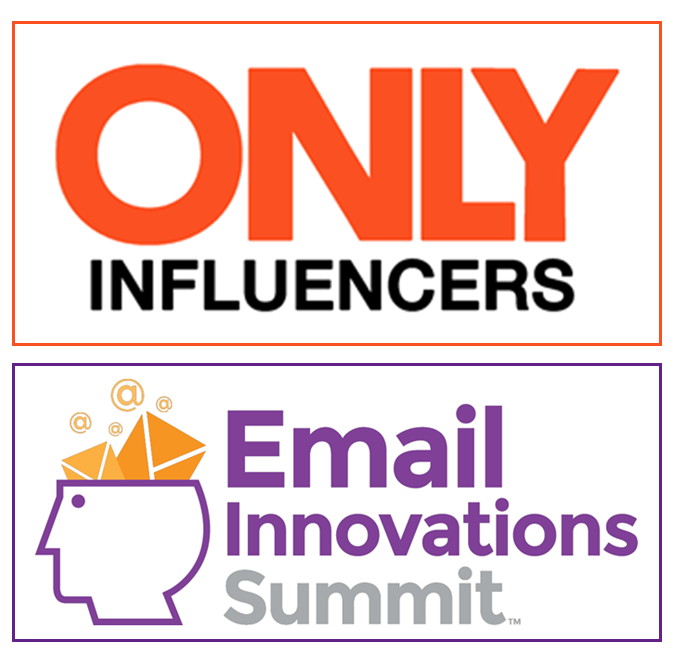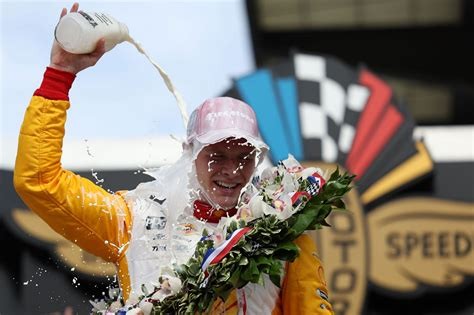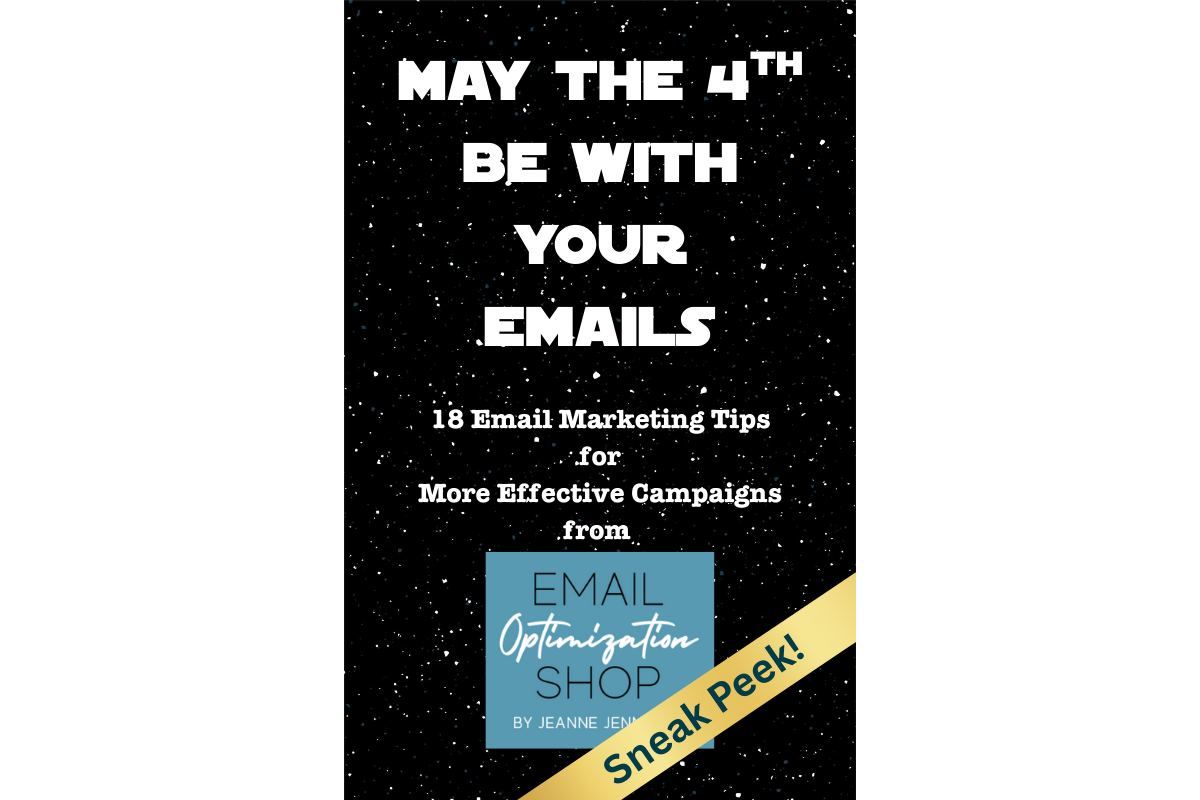Email marketing automation is all the rage right now. Being able to set up a multi-email or multi-channel campaign and have it triggered automatically based on an action, a prospect, or customer offers real efficiency.
But a lot of companies try to jump into marketing automation without laying the groundwork for a successful campaign. Here’s a quick primer on how to start.
The key to an effective marketing automation campaign is the thinking that happens before you ever build your creative, set up your timing and cadence, and send the first message. After the initial discussion of the goals, the target audience, and the customer journey, I start with a flow chart.
Flow charts aren’t very sexy, but they are a quick way to layout the program, and they give everyone a visual way to understand what is to be built. Below, you’ll see a sample flow chart from a member referral campaign that I recently created for an association client.
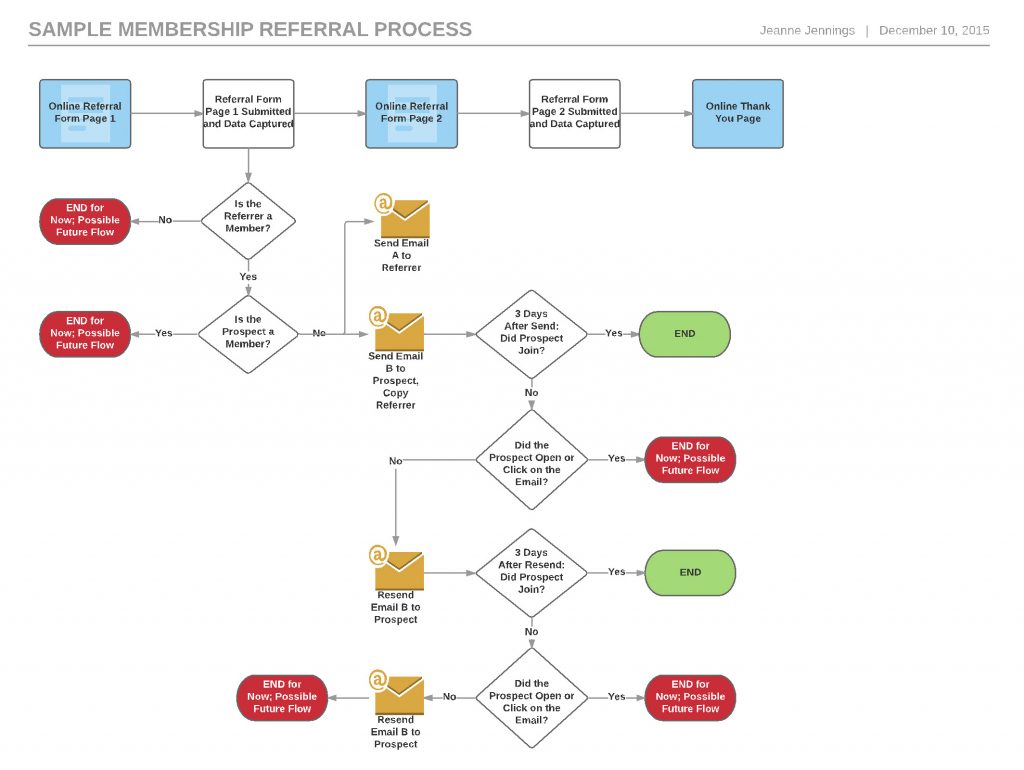
I won’t walk through it verbatim here, but I do want to touch on some of the high points and a few of the things you need to think through.
We started with a simple premise: to give current members of the association a simple way to refer colleagues.
Online forms
We determined that an online form would be the best way to do this. While we decided to use email as the primary channel, the association also wanted to collect postal address and a phone number for the prospects. In order to accommodate this, we set up a three-page online process.
The first page asks for the critical information needed to get the email out: basically first and last names, as well as email addresses, for both the member and the person they are referring. It also asks the member for their ID number (this is to help with the first query; see more below).
Once the member hits “submit,” the information in this form is collected and the process starts. While we hope the member will go on to provide their colleague’s postal address and phone number on page two, the referral process will move forward even if they do not.
The logic
This is where a lot of folks fall down when developing a program. You need to not only define what logic needs to be in place, but what information is needed for the logic to work and where that information lives so it can be queried.
You can see here that we have two different queries that need to be performed to determine whether or not to move forward with the process:
- Is the person filling out the form a member?
- Is the person who they are referring a member?
In this instance, the data we need lives in the association’s CRM system. Therefore, we need to set up a query there that can report back to the marketing automation system (they are integrated, which makes this all much easier). It’s not listed on the flow chart, but in the planning document, we spelled out what data is needed for the query – and you should do the same.
Scope creep
One of the biggest struggles in this initial phase is managing scope creep. You can see how I handle this on the flow chart. The “END for Now; Possible Future Flow” tells us that we might want to look back at this for the future.
Many companies skip this phase, but what I find with clients is that once I get them started on this flow chart process, they keep expanding the scope of the program. It’s good to capture those ideas, but the more complex the program is, the more time and energy it will take to launch. Better to start small, get something up and running, and then expand on it in phases.
Strategic resends
Another way to get more mileage out of a simple campaign like this is with strategic resends. You’ll see that if the person being referred joins after getting the first email, they won’t get any others.
But if they don’t join and if we don’t see any activity on the email (an open or a click) after three days, we will automatically resend the email. If there’s still no sign of life, a third and final email will be sent. This is a second type of logic; it’s usually a bit easier to implement since the data (open and click information) lives in the marketing automation system itself.
Strategic resends like this have the ability to increase the reach of your email by 50 percent or more over what you’d get with a single send, for very little time or resources spent. A more sophisticated program might have three different messages that are sent out at intervals, suppressing only those who have joined. This is not a bad idea and is something we are likely to do here; however, starting with a single message was a quick way to get this up and running.
In conclusion
If you’re looking at doing an automated email campaign, break out your flow chart software (or just a blank piece of paper and a pencil) first and set your plan. You’ll find that it forces you to think through the full program from start to finish, and it makes the set-up a lot easier.
Take Your Email Automation to the Next Level
Feeling inspired to improve your email automation strategy? Join our Email Marketing Automation Workshop to learn how to:
- Identify and prioritize automation opportunities for maximum ROI.
- Create SMART goals and message maps that guide your campaigns.
- Plan offline flow charts that simplify execution and maximize impact.
- Integrate SMS thoughtfully to enhance your efforts.
This live, interactive workshop is designed to give you a clear framework for planning automation campaigns that are strategic, cohesive, and impactful. With a small class size and hands-on guidance, you’ll leave equipped to create campaigns that truly resonate.
Until next time,
Jeanne
Note: This column was originally published by ClickZ on December 18, 2015.
